Architecture on the Road
FENGHUANG ANCIENT TOWN
The ancient town of Fenghuang (凤凰县, Fènghuáng Xiàn), situated in Hunan Province, is one of the most popular destinations in the country for the most obvious and simple reason: Fenghuang is considered one of the most beautiful and picturesque places in China.
The world ‘Fenghuang’ translates to “Phoenix”, and the city owes its name to this mythological animal. According to the legend, centuries ago two phoenixes flew by the city, and finding it marvelous, they decided to stay forever.

The charm of Fenghuang is undeniable. Surrounded by a gentle mountainous landscape, crossed by a placid river, hundreds of traditional buildings line the riverside; decadent stilted houses reflecting in the surprisingly clear water, stone bridges and wooden boats, paved alleys and ancient watch towers…
The views that Fenghuang offers remind of those dreamy Chinese paintings that bring travelers and photographers from all over the World to this remote town in China.

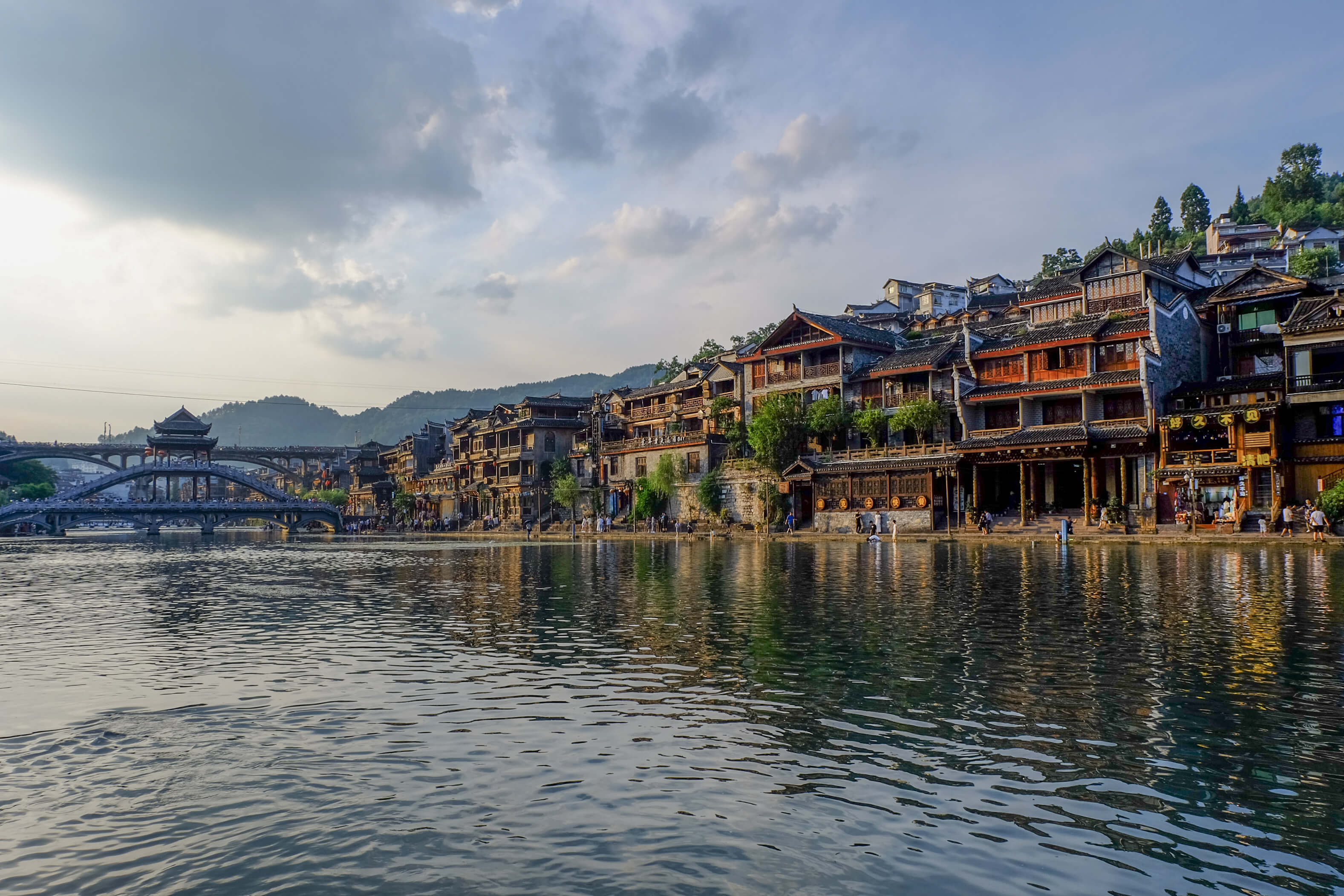
Fenghuang Ancient Town is mostly populated by the Miao Ethnic Minority, which is one of 56 ethnic groups officially recognized by the Chinese government, mostly settled in the Southern Provinces of China.

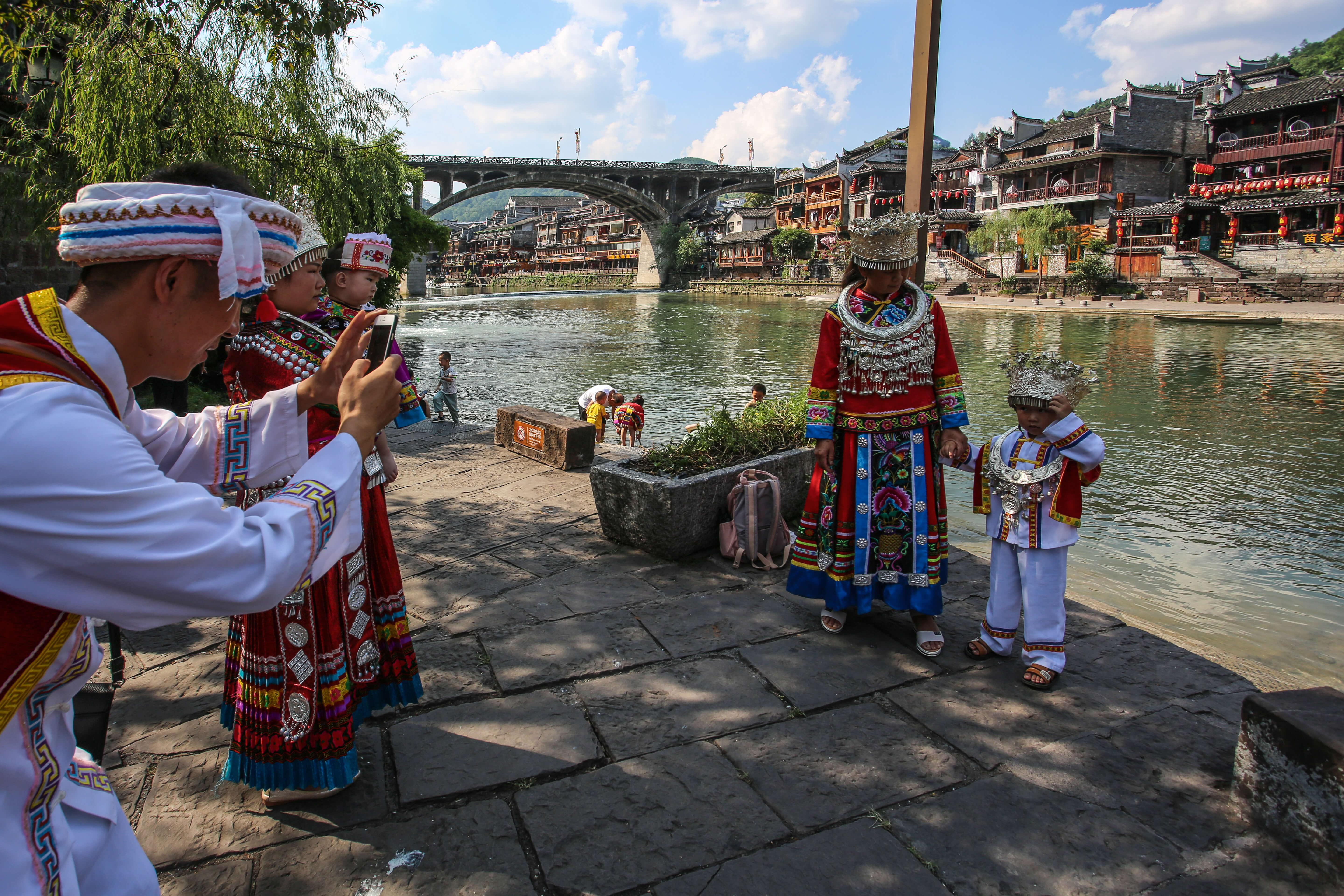
The history of the Town is really old, dating back over 1,300 years. In particular, most of the remarkable buildings and fortifications that we can still visit are mainly from the Ming (1368 – 1644) and Qing (1644-1911) Dynasties.
The ancient town area spans both sides along the bends of the river Tuojiang and as of writing, there is no entrance ticket required to access it. Just wandering around is in fact free of charge, and it’s indeed the simplest way to enjoy Fenghuang’s best feature: its picturesque riverside and scenic ancient alleys.
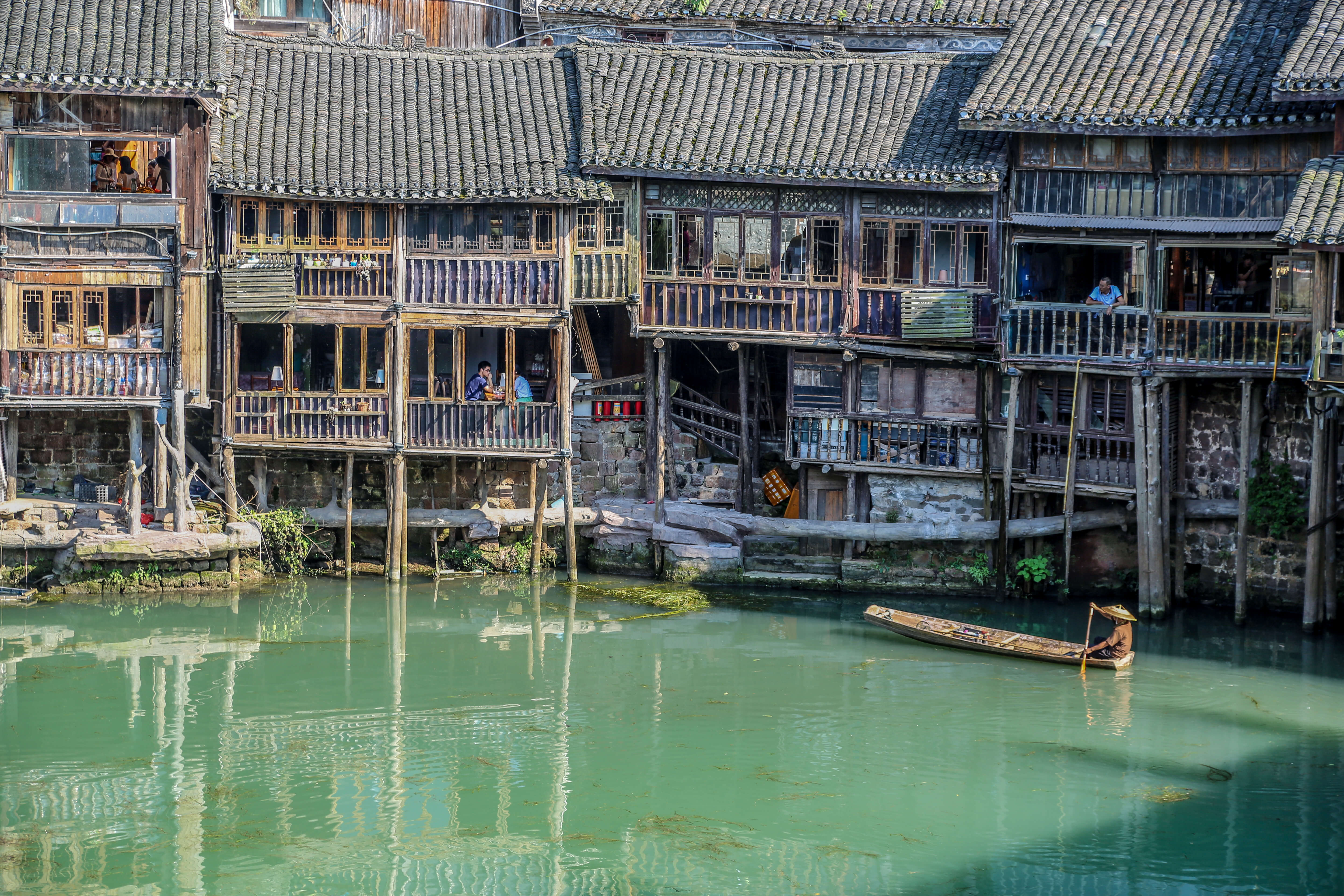
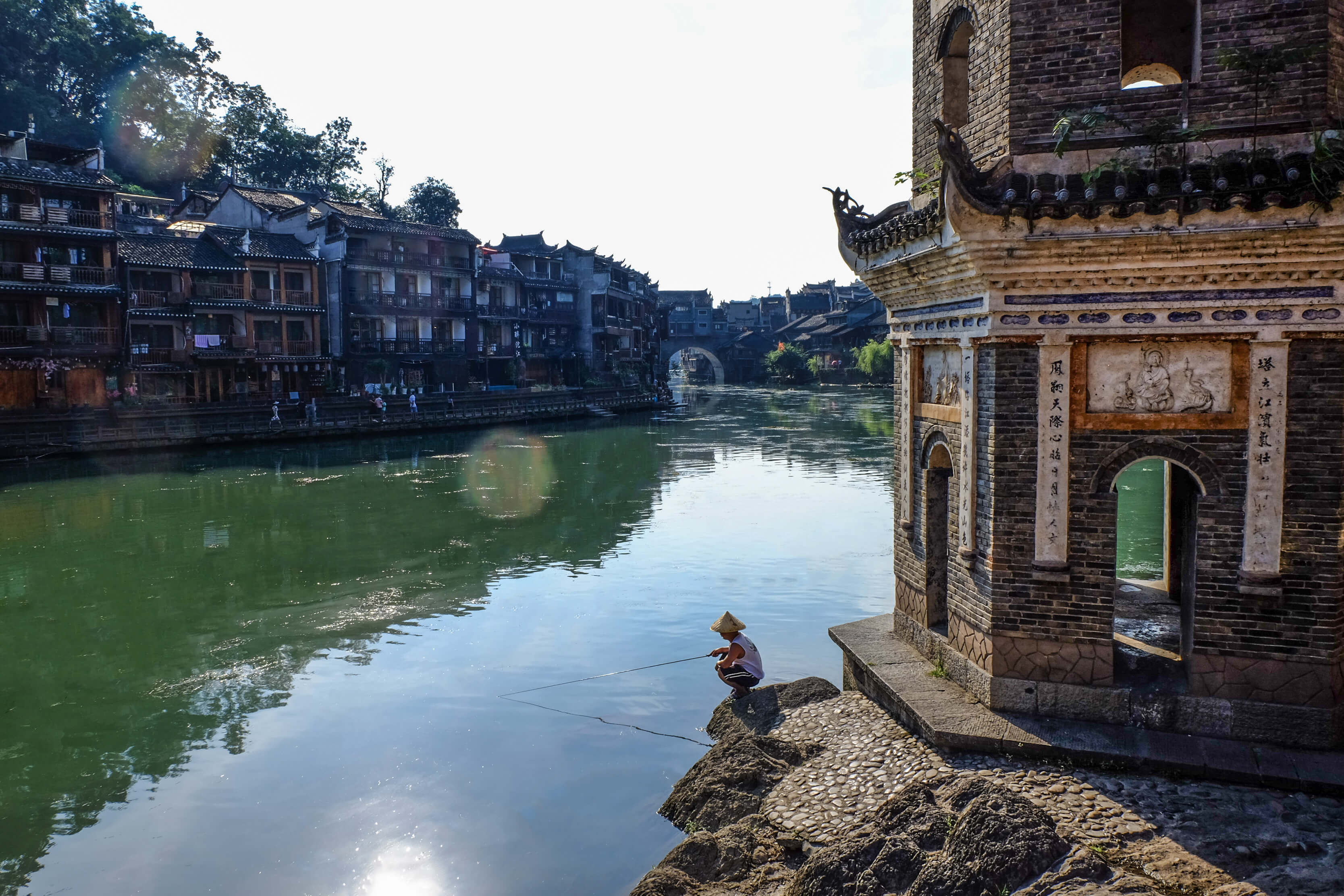
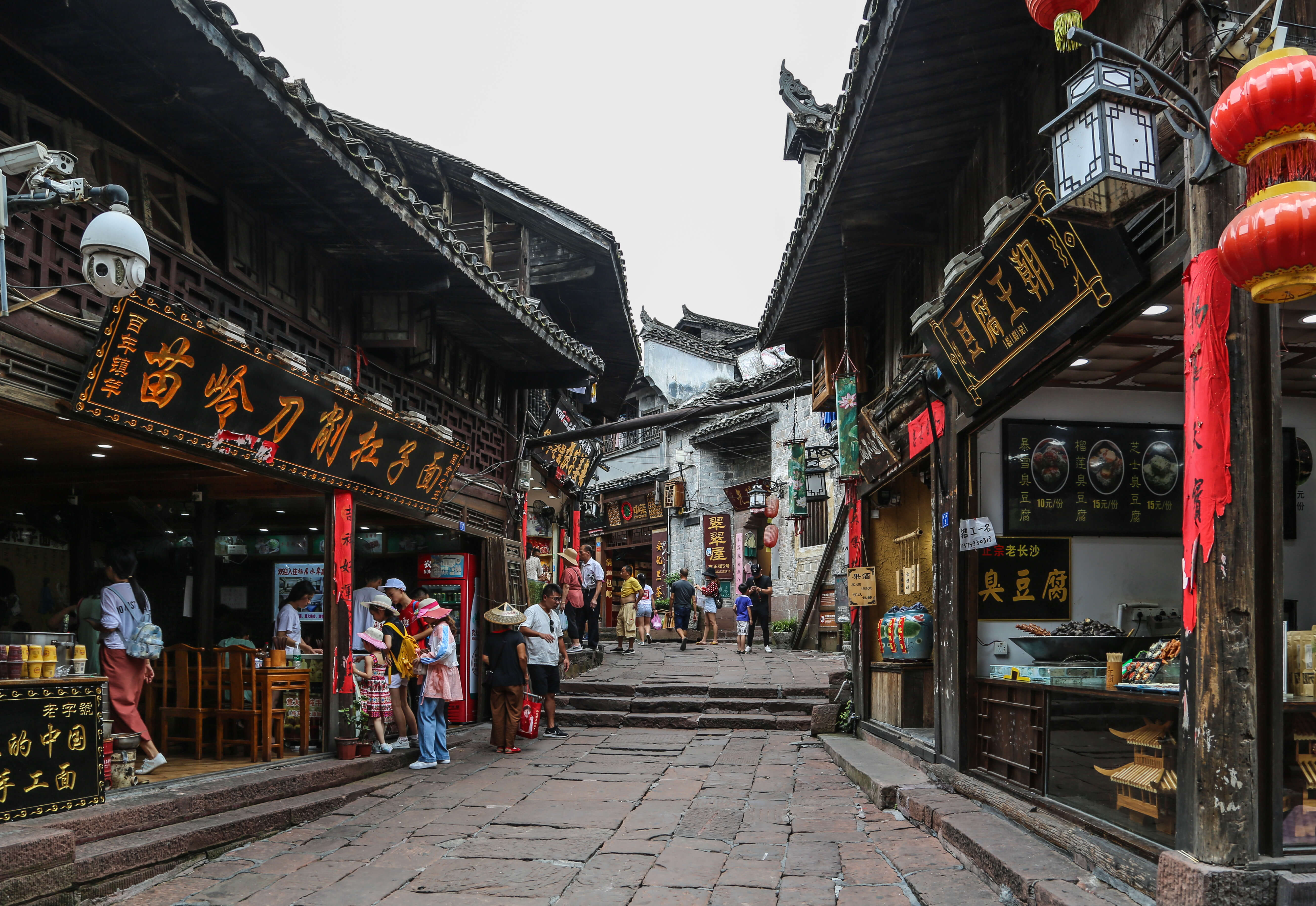
I spent 1.5 days in Fenghuang and I thought it was plenty. A half day is enough to walk from top to bottom and have a general feeling of the Ancient Town, while after 1.5 day I found myself walking basically every single alley at least 3 times!
WALKING THE RIVERFRONT AND CROSSING THE BRIDGES
The riverside is the most iconic aspect of the town, offering photography enthusiasts the feeling of being in a photography heaven (at least this is how I felt). I literally found myself taken dozens of pictures of the same spot from all different angles, and almost couldn’t stop.
It’s obviously where the majority of tourists spend their time and during a summer evening it can become really crowded.
The Tuojiang River is crossed by several bridges, all different from each other’s style, material, and shape.
Having fun while crossing the bridges is a real activity in Fenghuang!


FORTIFICATIONS AND GATE TOWERS
Once upon a time, Fenghuang was a fortified city – like many of the ancient Towns of China. Part of its ancient fortifications and watchtowers are still intact and walkable, offering a small elevated promenade within the ancient buildings.
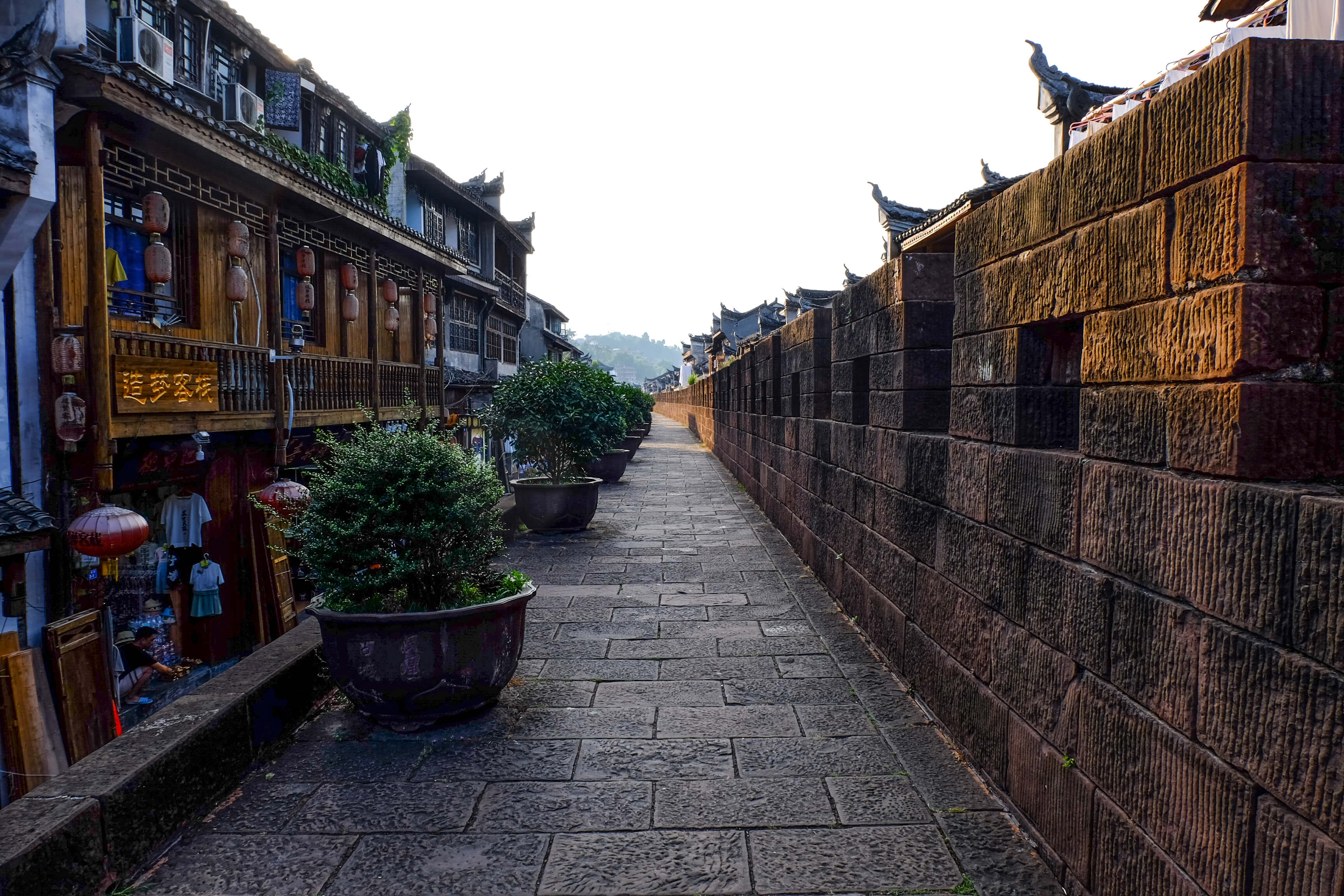
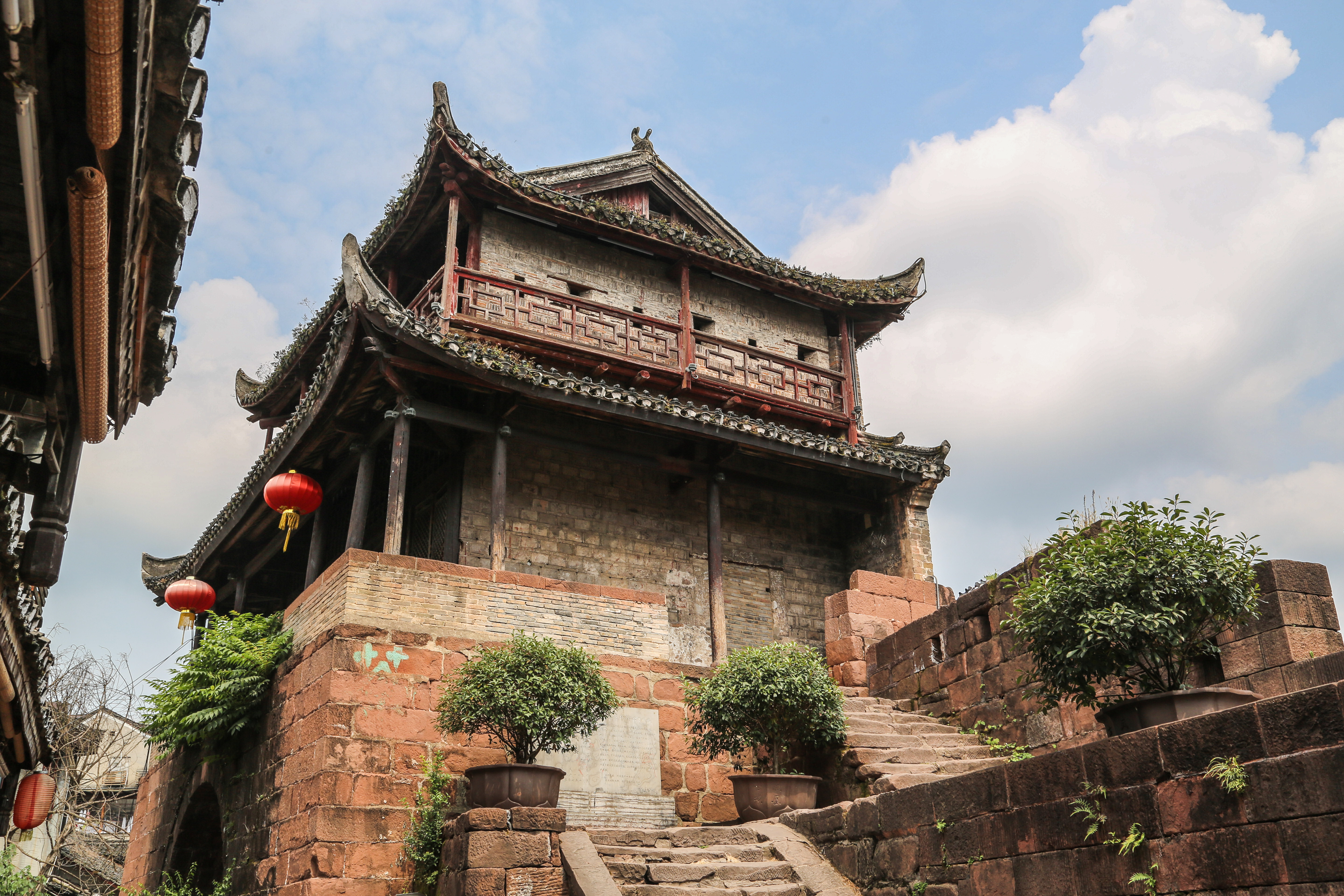
FORMER RESIDENCES AND ANCESTRAL HOUSES
For those who want to deeply visit everything that the city has to offer, is available a 148 rmb ticket that gives access to several heritage spots, including some former residences of famous Chinese Poets and officials, a few temples and memorial halls, the Fenghuang Ancient City Museum, and the Hongqiao Art Museum (and a short boat ride along the river).
The ticket is sold at the entrances of every historical sites and valid for 2 days.
Most of the people avoid the ticket and simply prefer to just wander around.

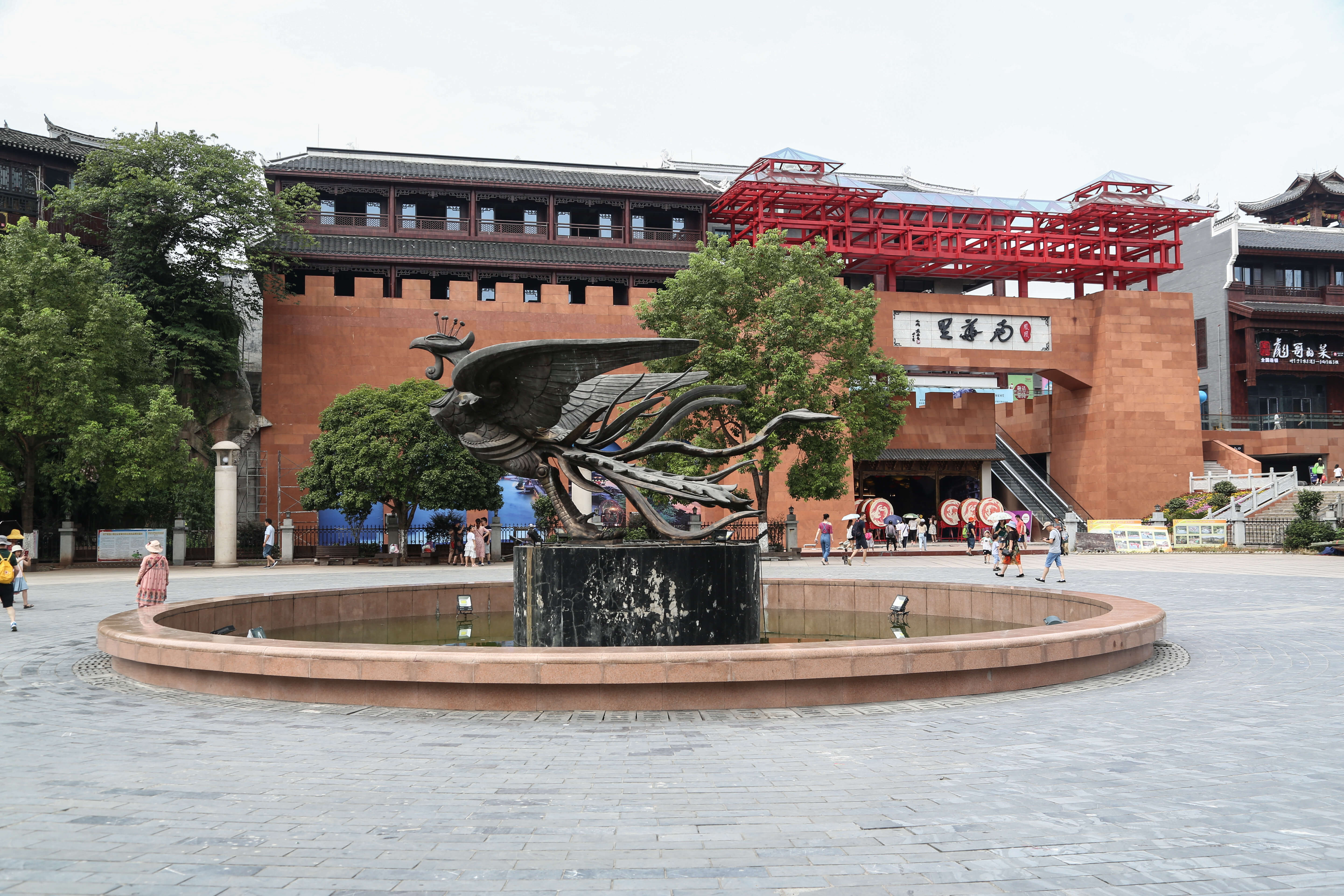
Its popularity and cultural importance (especially within China) means Fenghuang is not really an ‘off the beaten path’ destination anymore.
Nowadays thousands of people flock to this little town every year, so visiting this place in high season (such as during summer holidays and Chinese national holidays), you should expect to share it with a lot of other tourists.
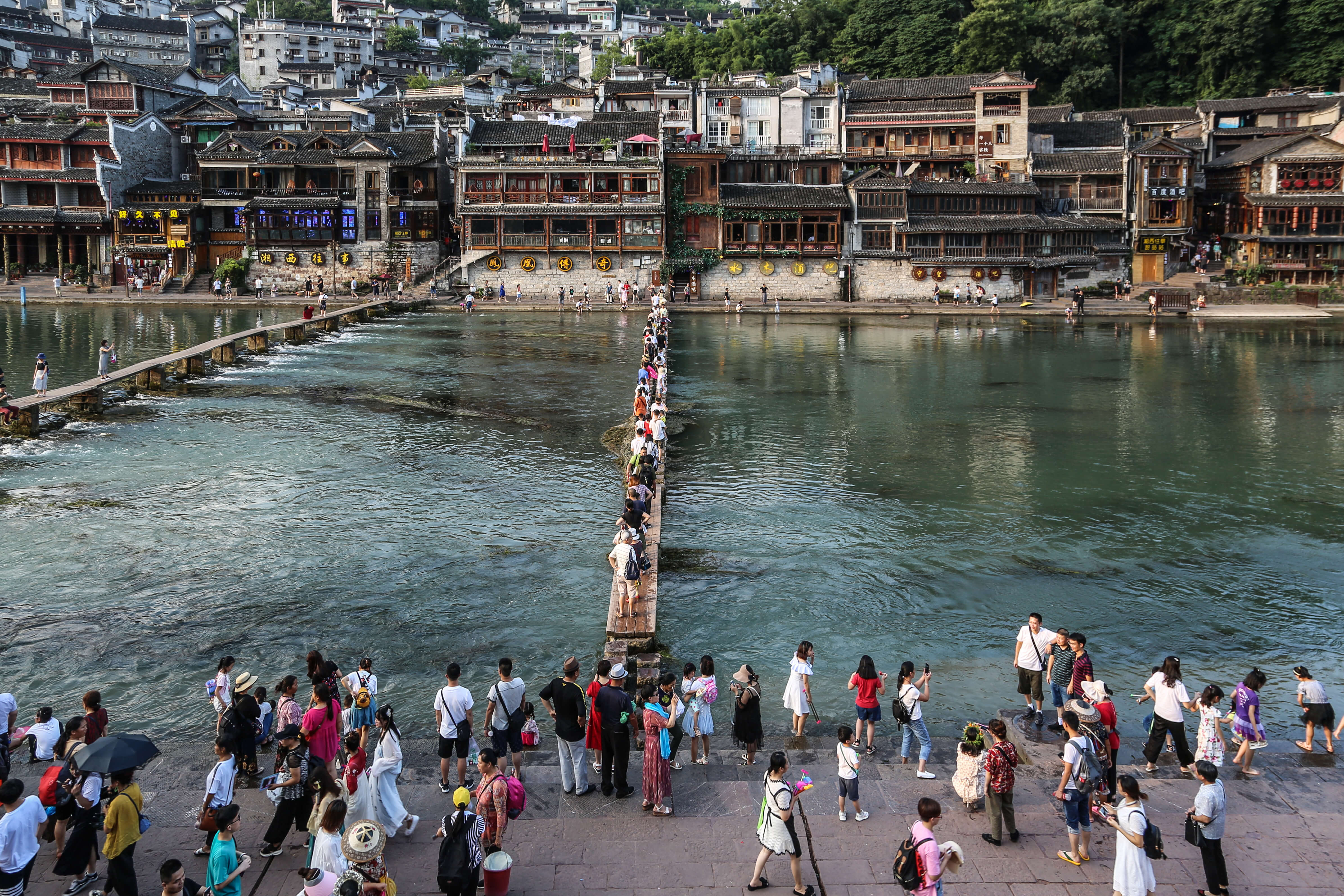
Being a popular travel destination in China also means there are a lot of souvenir shops which can turn the place to be quite commercialized.
The majority of the buildings in the Ancient Town are now basically turned into tourism facilities of different ranges. Along the water there are a lot of boutique hotels, while in the back alleys it’s possible to find less fancy guesthouses with affordable prices.
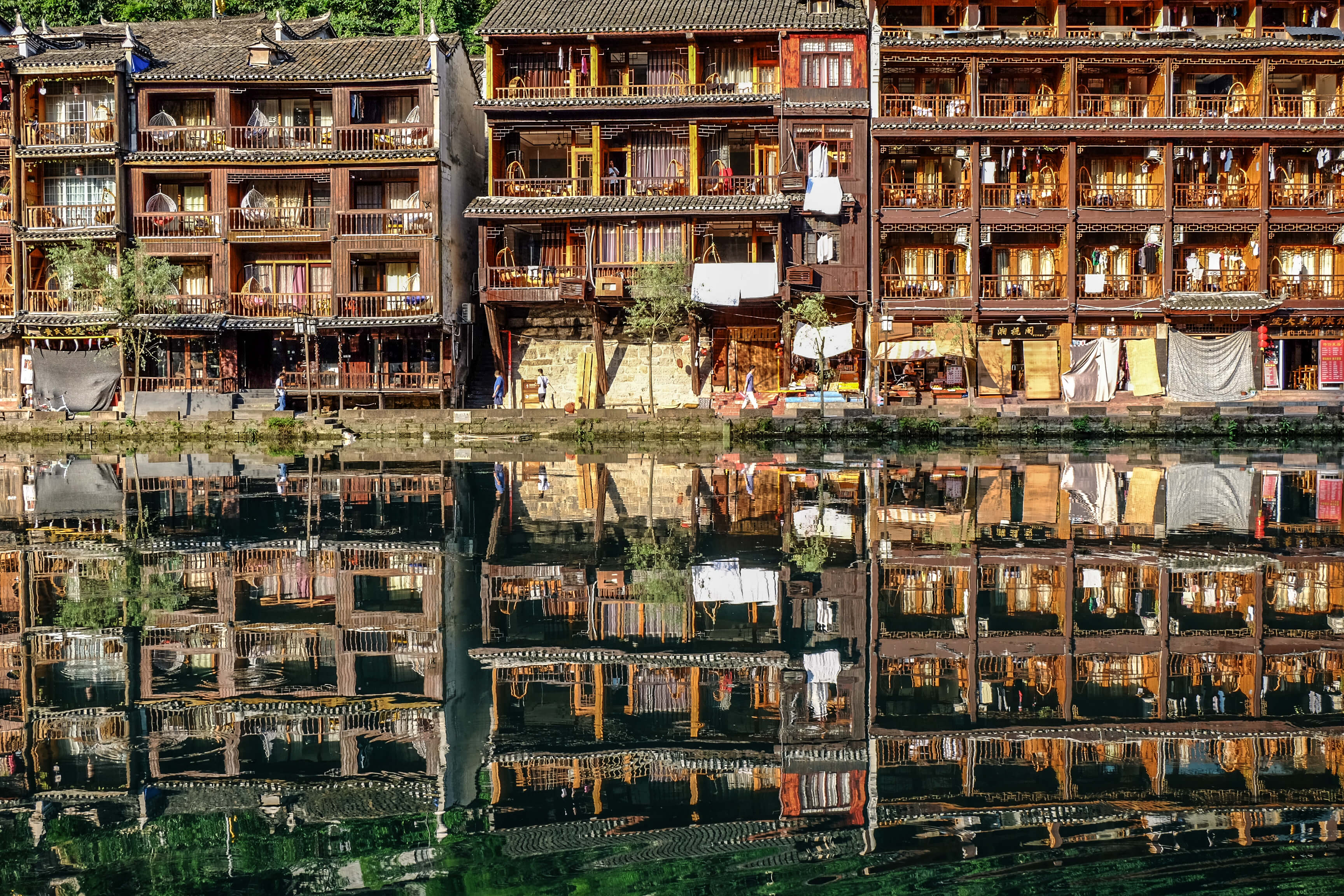
Numerous are the souvenir, snacks and drinks shops in the small ancient alleys, where a lot of restaurants and street food stalls are available for every kind of taste.
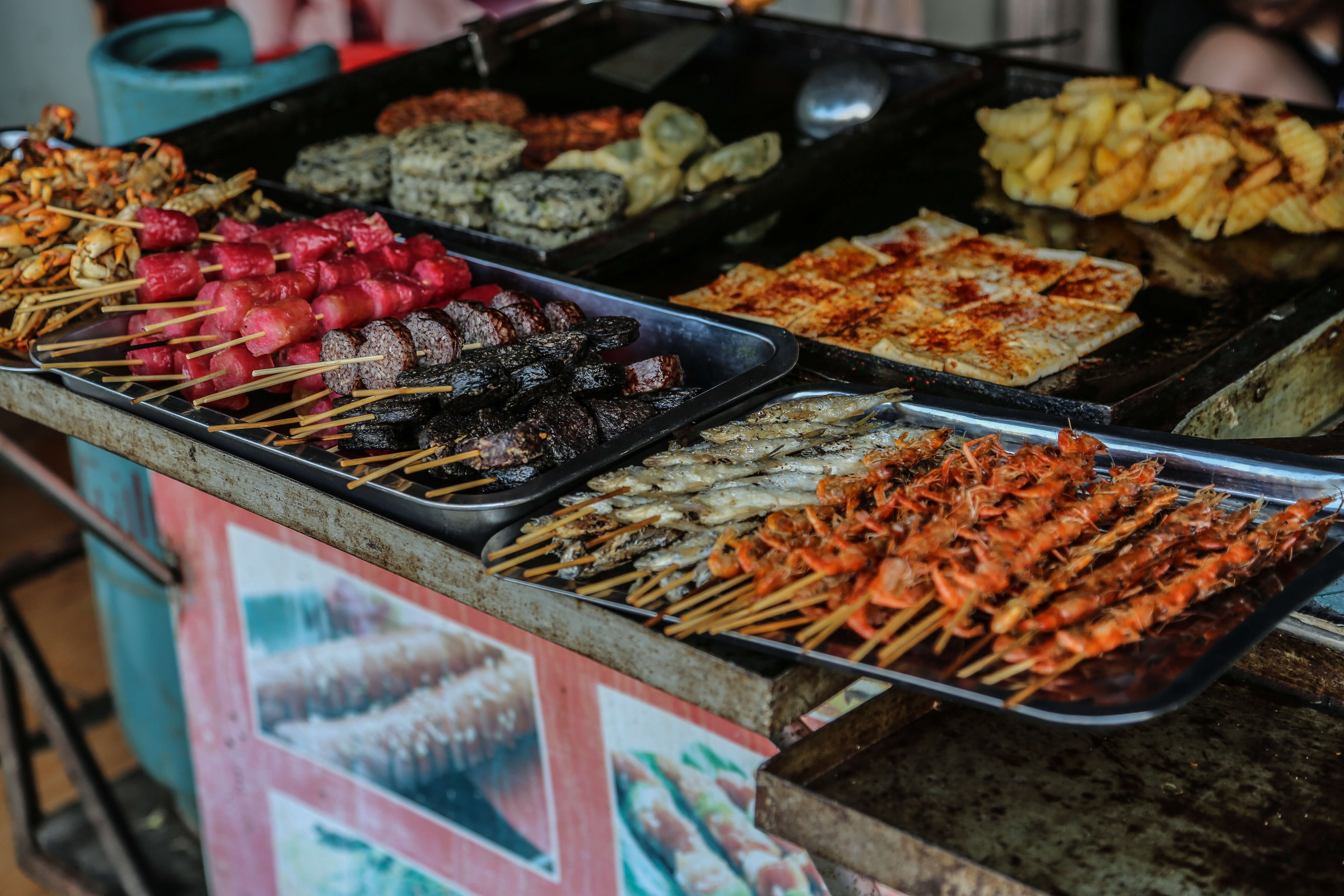
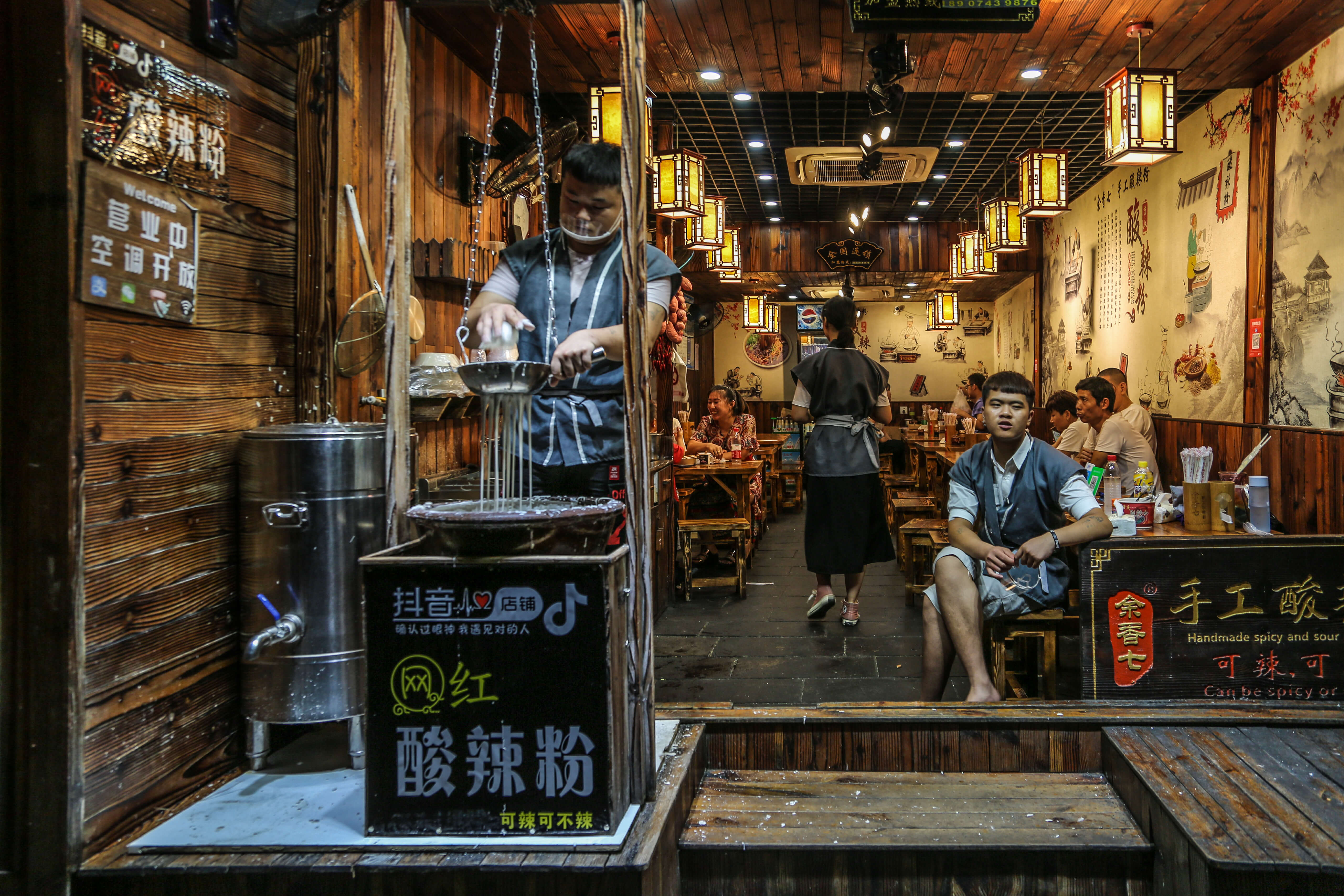
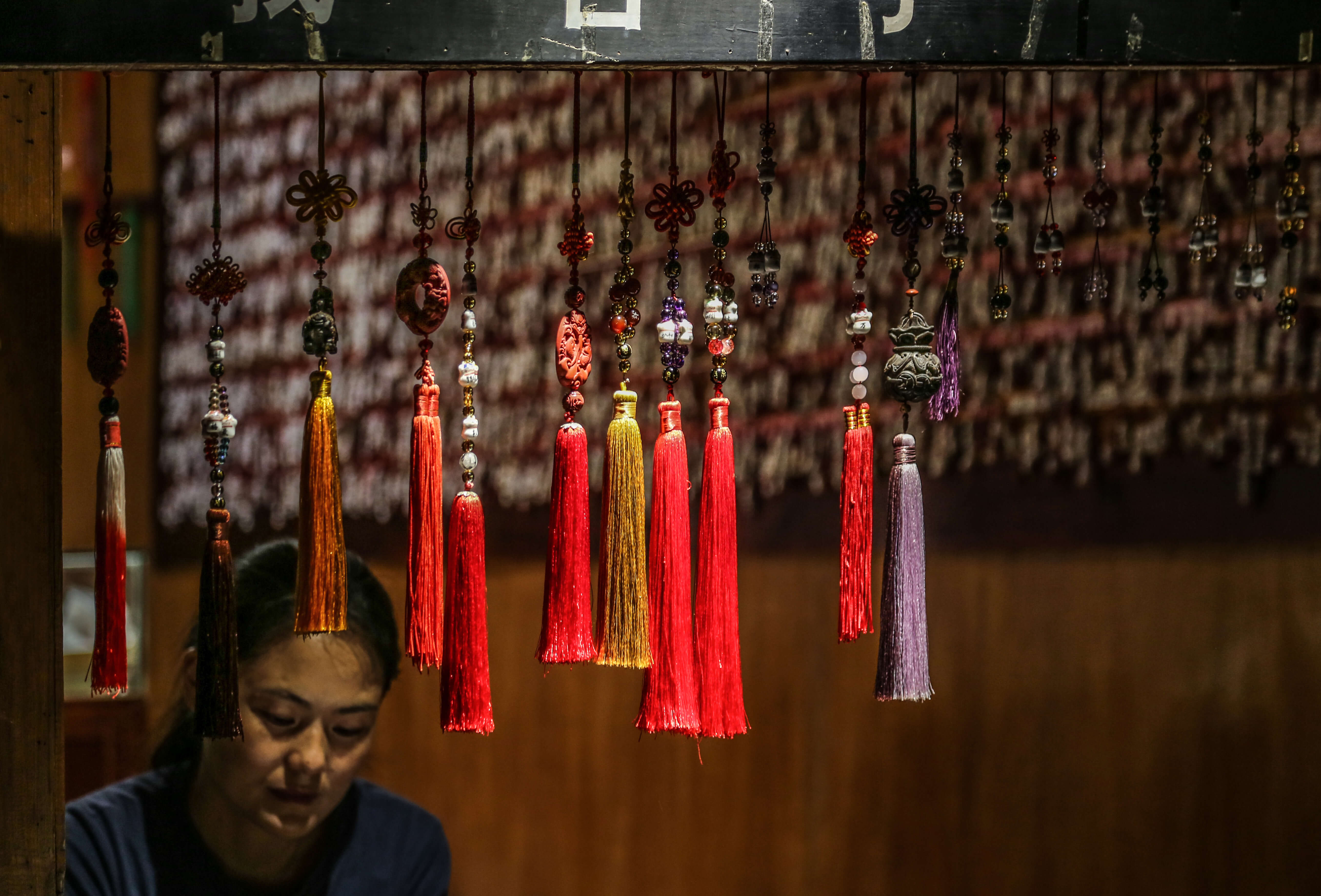
Despite being a bit touristy and commercialized, Fenghuang still retains it’s charming look, and it’s hard not to fall in love with it, especially if you like taking pictures!

OFF THE BEATEN PATHS
As soon as you walk away from the river and the tourist spots, the number of people breaks down and the souvenir shops leave space for local businesses, markets and a more authentic local life.
A walk through the outskirts of the Ancient Town can be an interesting activity to do. Despite the fact that is not as picturesque as the riverfront, a walk in further neighborhoods offers a snapshot of the unpolished and sometimes rough lifestyle of the Hunan Province countryside.
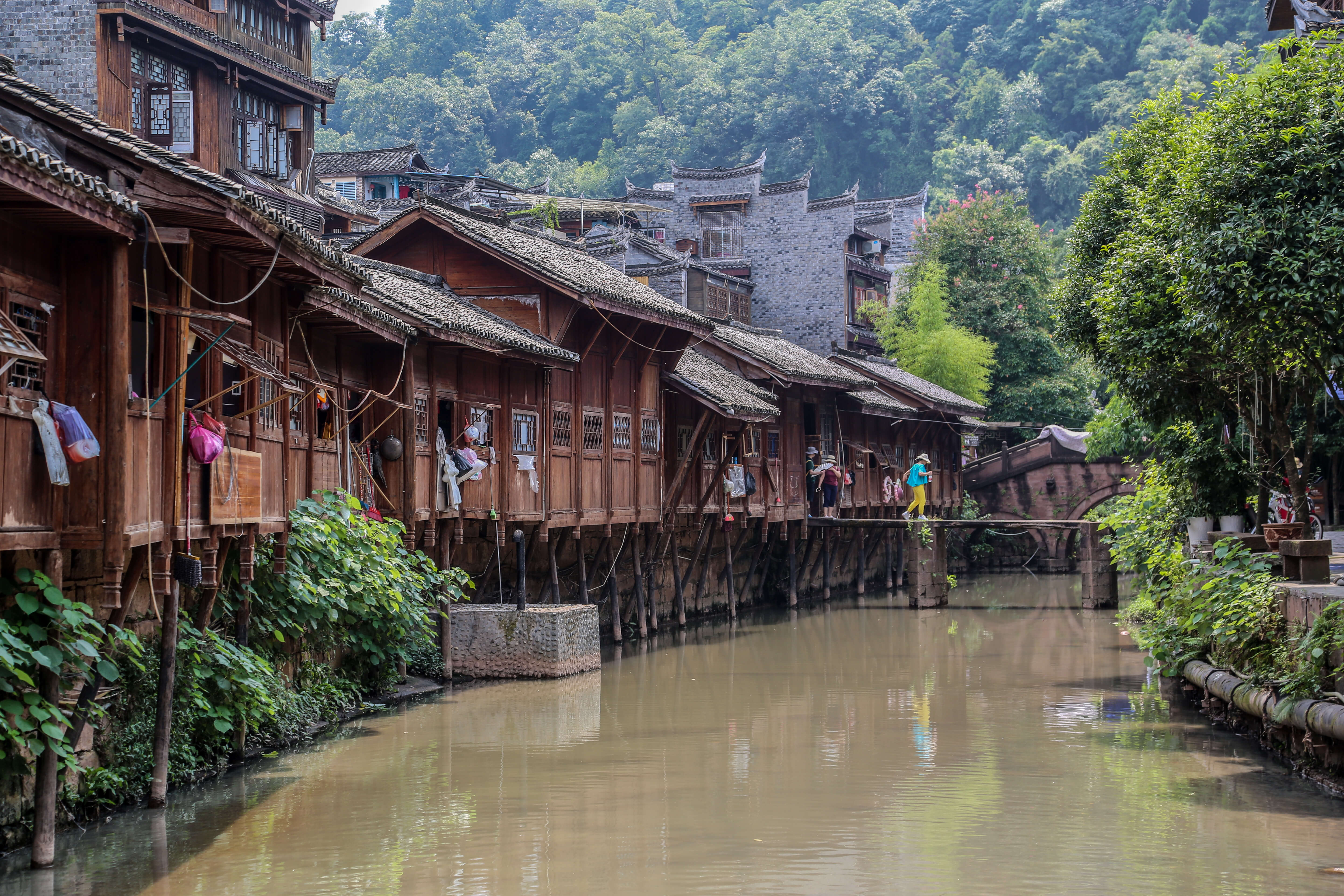

One full day is enough to visit the Ancient Town, while a longer stay allows you to visit some of the attractions that Fenghuang County has to offer.
The most popular excursion from Fenghuang Ancient Town is to the Miaojiang Great Wall (‘Great Wall of Miao Territory’), also called the “Southern Great Wall’. It consists of a series of fortifications that are 190 km long, many of them located not far from Fenghuang, built during the Ming and Qing Dynasties in order to separate and conquer the Miao People and the other Ethnic Minorities living in the area.
Another popular excursion from Fenghuang is to the surrounding Miao Ethinc villages.
The most famous and open to visitors is Dehang Miao Village (德夯), located between mountains and waterfalls and characterized by traditional Miao type of wooden dwellings (Diaojoalou). Nowadays a 100 rmb entrance ticket is required to enter the Dehang scenic Area, where it is possible to visit several Miao Ethnic Performances.
Fenghuang can be reached by airplane, bus, or private car. At the moment, there is no railway stopping there.
By flight:
Fenghuang is served by Tongren airport, located 30 km away from the ancient town, allowing quick connections with many of the biggest cities of China.
From the airport, there are tourist bus that connect to Fenghuang.
By bus:
Being one of the most popular destination of Hunan Province makes Fenghuang well connected by bus to many of the bigger cities of this area of China (in the same Province or surrounding).
The closest major cities to Fenghuang are: Huaihua (1.5 hours), Tongren (1.5 hours), Jishu (1.5h), and Changsha (6h).
Reaching one of these bigger cities by train or high speed train, and then jumping on a bus, is the most popular way to get to Fenghuang.
A lot of tourists visit Fenghuang before or after visiting the breathtaking Zhangjiajie National Park, famous for being the inspiration landscape of the movie Avatar.
Zhangjiajie is 4-5h bus ride (depending on the departing bus station around the National Park).
Reaching Fenghuang by bus from Zhangjiajie is the route that I took during my trip through Hunan Province. I highly suggest to take a couple of days stop in Zhangjiajie when traveling in this part of China.
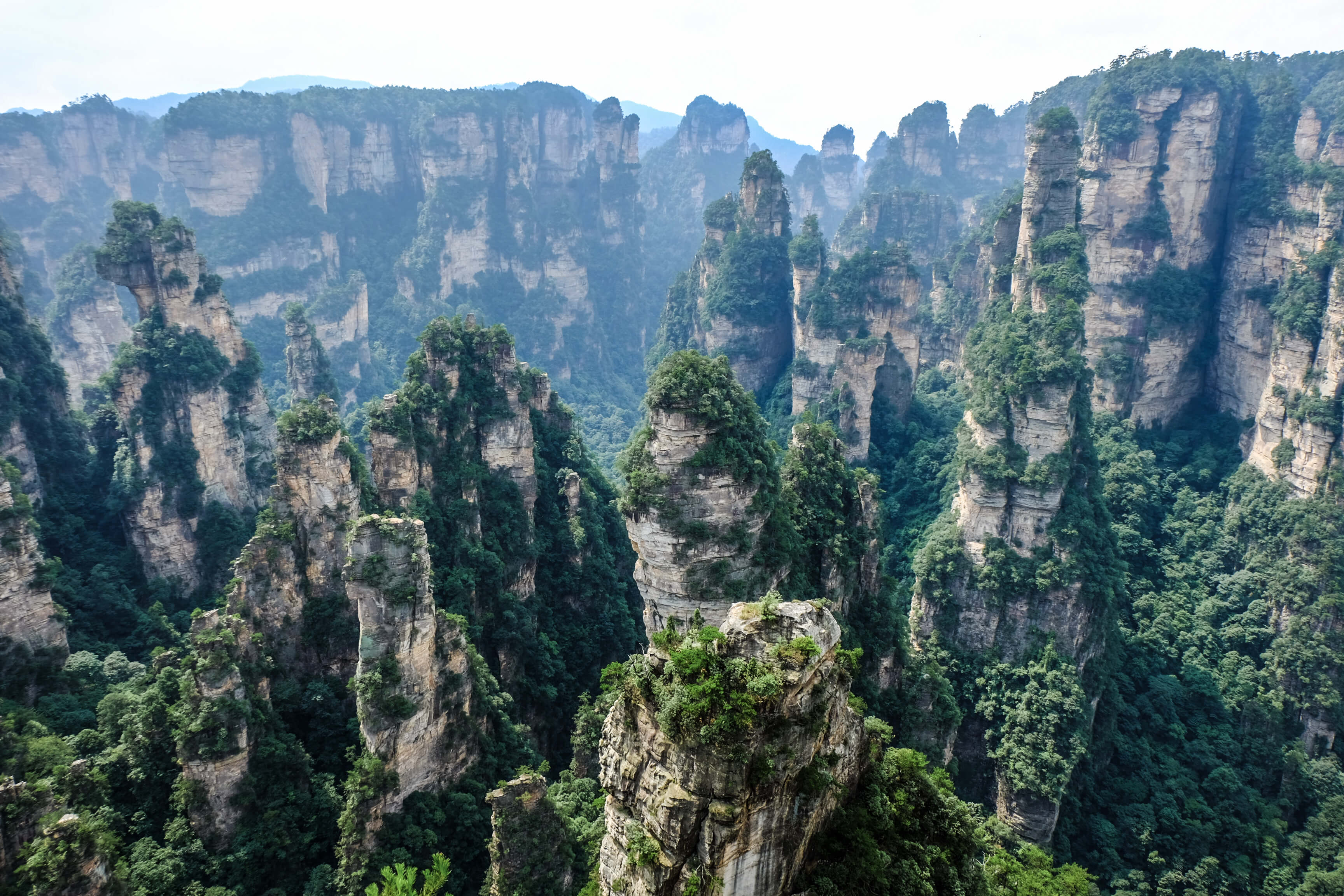
The long distance bus station is situated in the modern part of Fenghuang, 1km away from the Ancient Town Area. From the bus station, it is possible to take a short taxi ride to the main spots.
Walking takes approximately 30 minutes (but the terrain in this part of the city is really sloped so it’s not really suitable with heavy luggage).
I visited Fenghuang in August, in the middle of the summer holiday season, which is often a very crowded time to travel within China (together with the Chinese National Holidays).
Although there were a lot of people and a few spots felt a bit congested, overall the visit of the Ancient Town during the day time was still quite enjoyable.
While the early morning was busy with a lot of loud tour groups, around noon the crowds seemed to disperse.
In particular, I noticed that in the early afternoon (due to the hot temperature) the city felt quite empty.
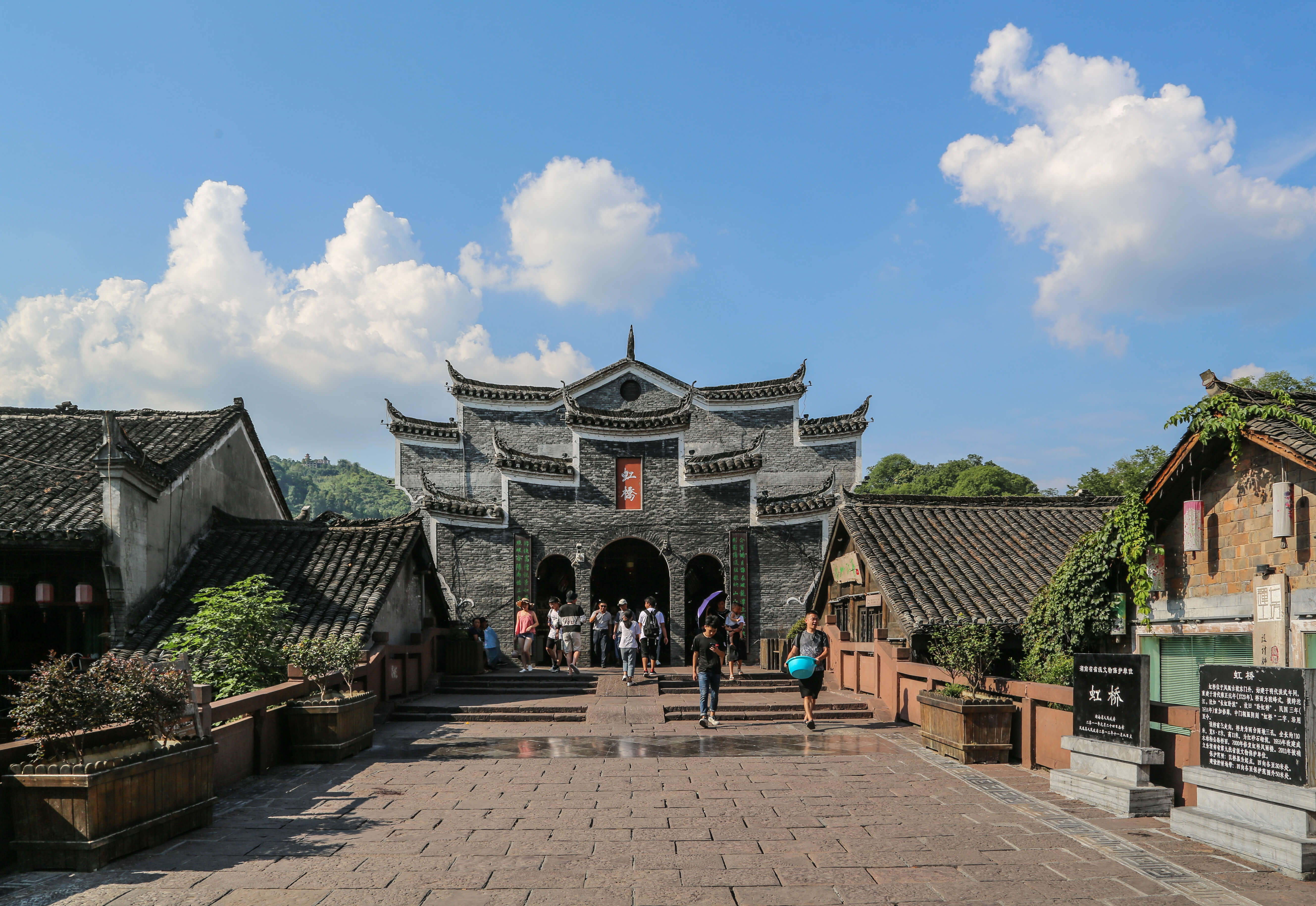
As soon as the heat cooled down, more and more people started to pop out… by sunset the river side was teeming with so many tourists and locals enjoying the scenery and playing with the water.
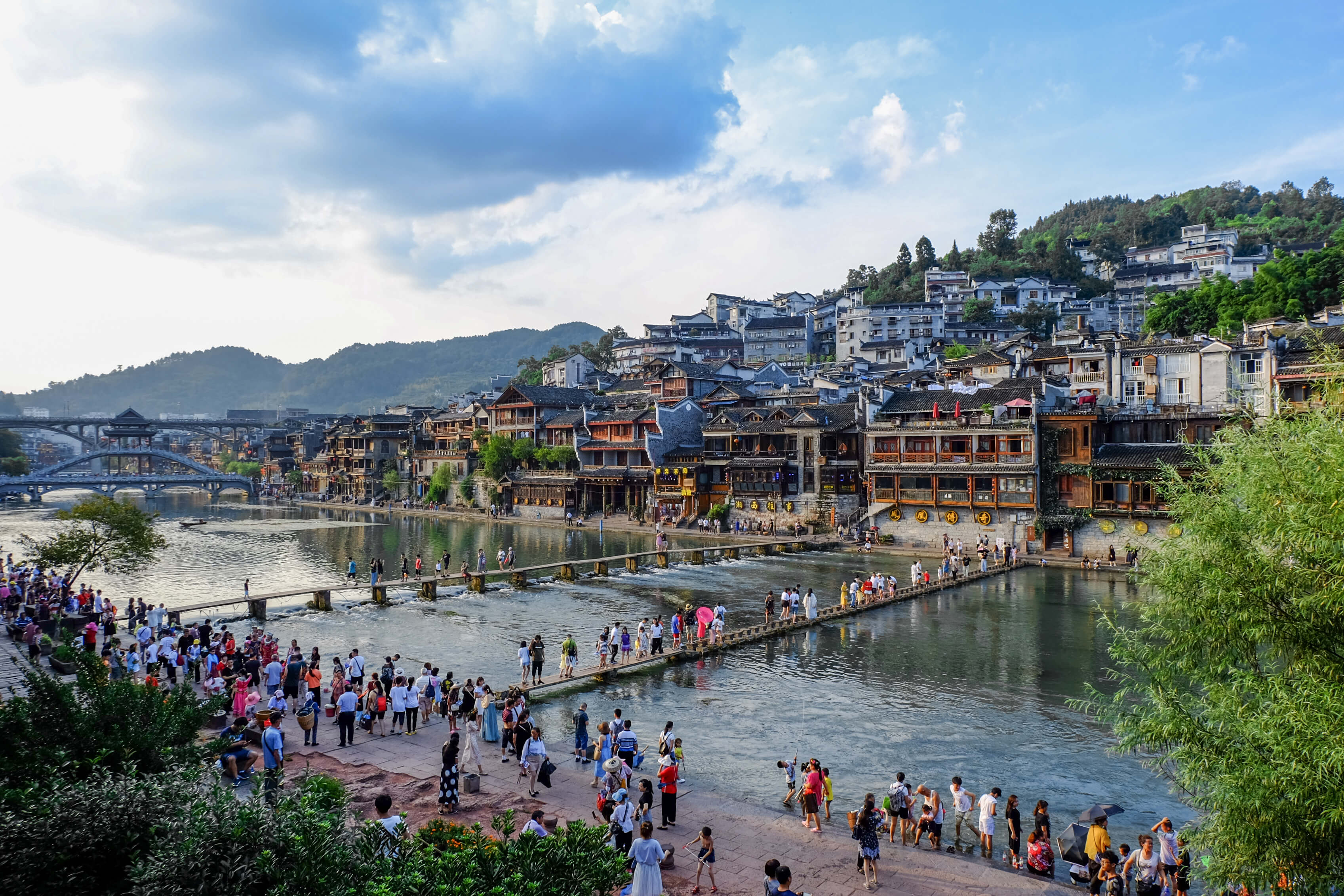
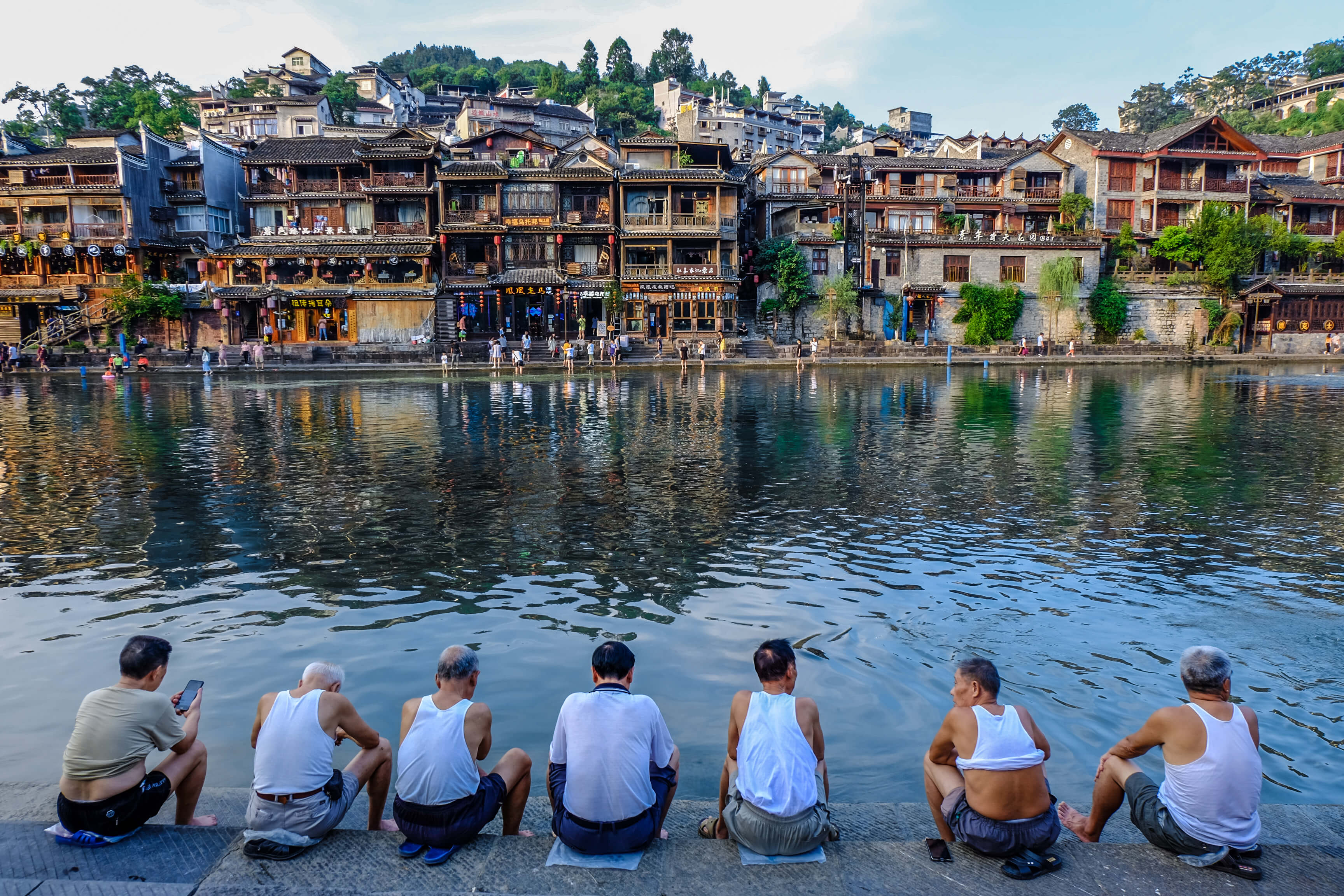
The night time was extremely busy.
Fenghuang indeed seems to have a surprisingly active nightlife, with all the main commercial activities on full business, some very loud bars, Karaokes, and nightclubs.
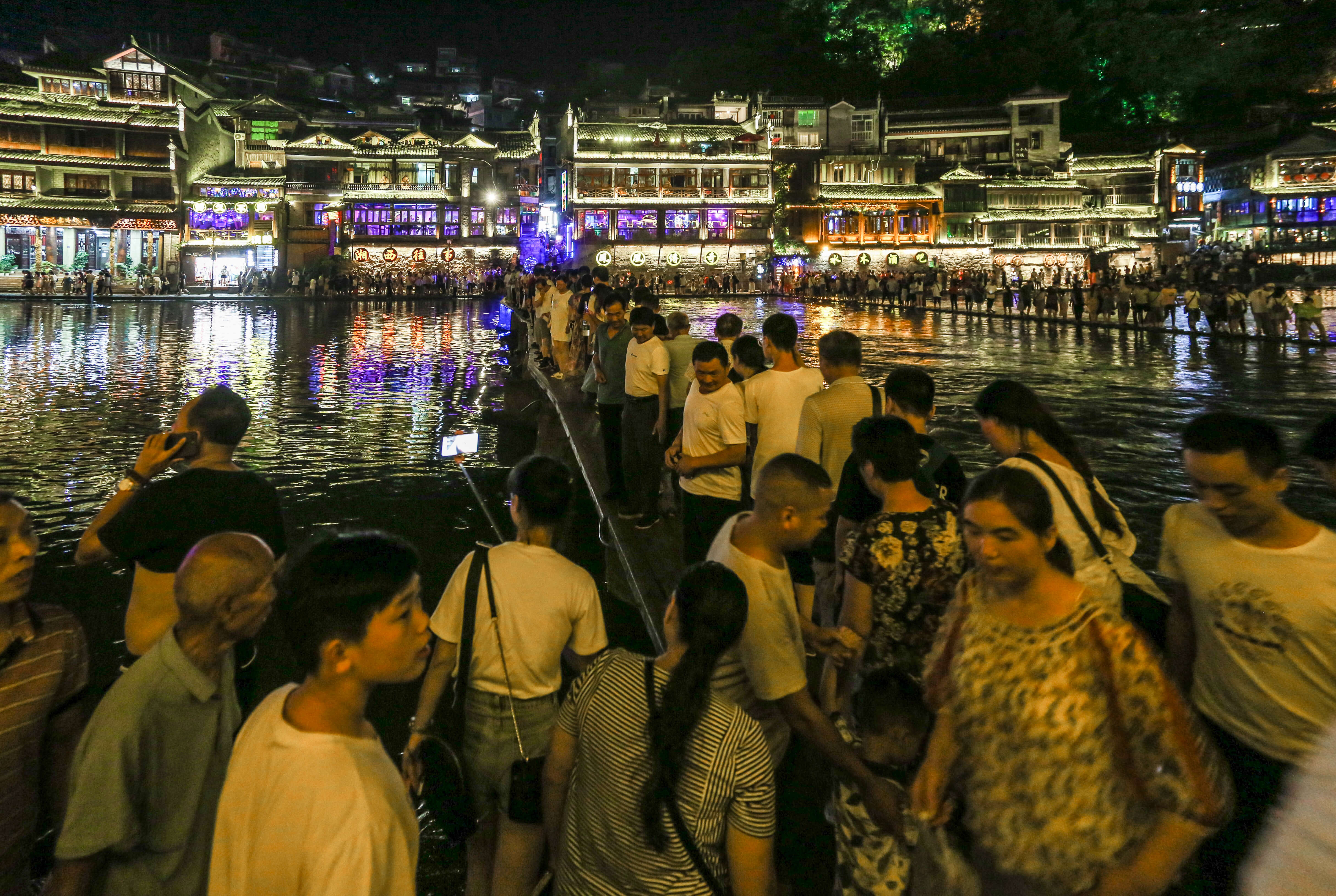

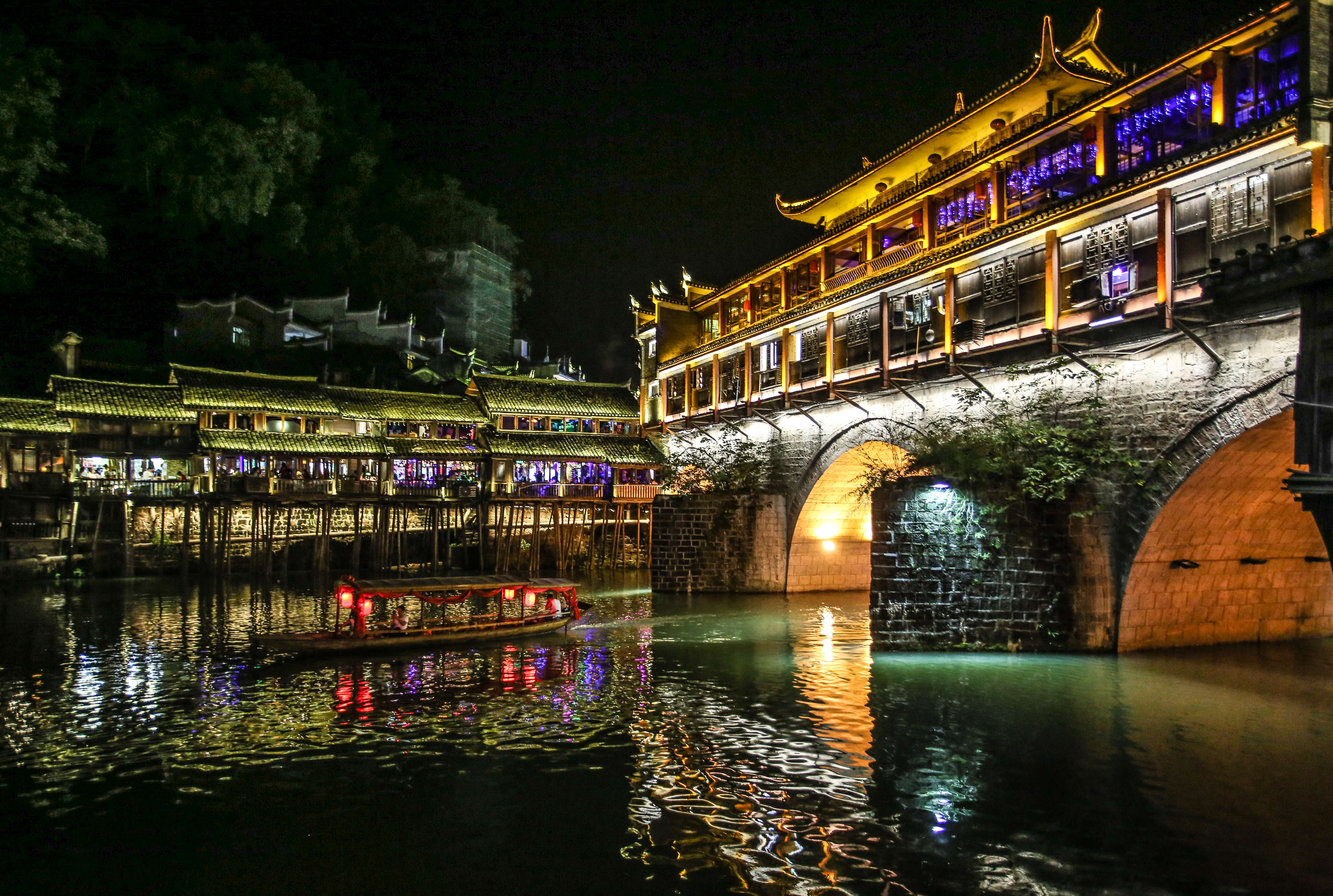

As much as I tend not to quite like touristy and busy destinations, I must say that Fenghuang is undeniably one of the most beautiful ancient towns of China, and worth a stop, even if getting there can be quite time-consuming.
I wouldn’t really consider Fenghuang an off the beaten path destination, as somebody claims: it is touristy, commercial and can be really crowded.
Bearing that in mind, I believe that the old town can still be an enjoyable place where to spend 1 or 2 days, lazily wander around and take pretty pictures.
The result of the synergy between the beautiful natural landscape and the beautiful vernacular architecture is breathtaking, leaving the spectators marveling about the beauty that ancient Chinese culture was able to create.
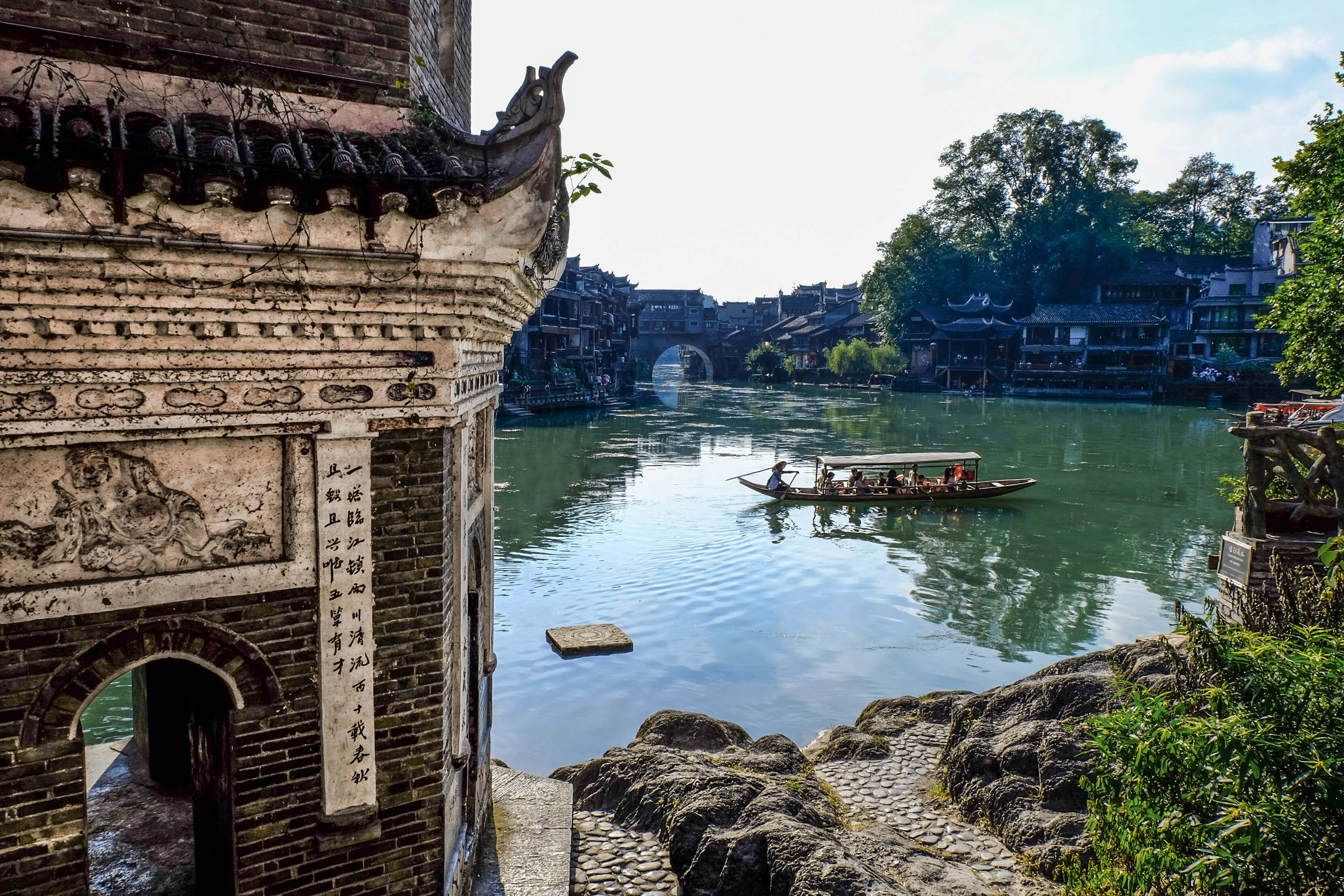
IF YOU FOUND THIS POST INTERESTING AND INSPIRING, HELP ME TO SHARE IT WITH OTHER TRAVELERS!
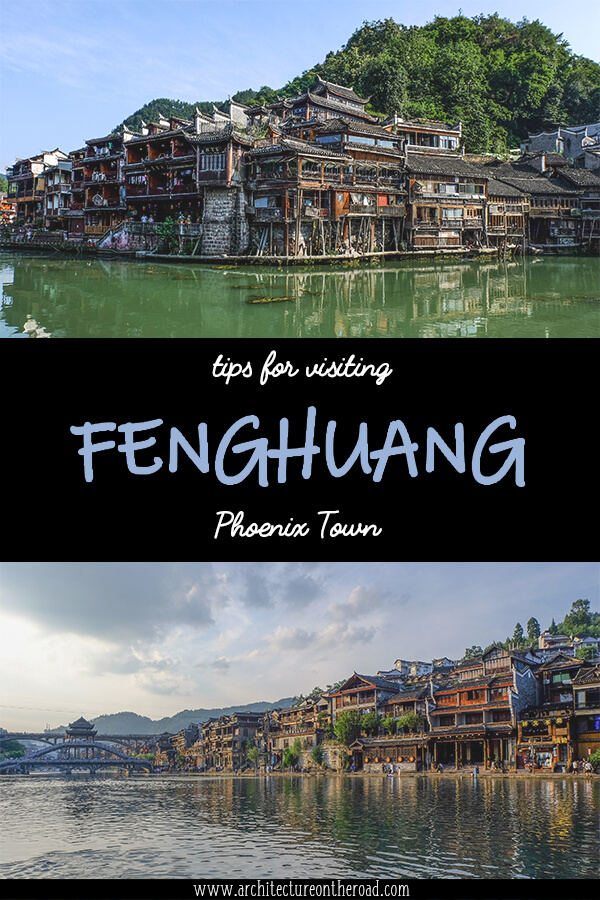
FRom the same province
stay tuned !
search for a destination
latest travel itineraries
latest CHINA articles
Text and pictures by
Architecture on the Road ©
Architecture on the Road
All rights reserved
All photographs on this site were taken and are owned by me (unless credited otherwise).
If you would like to use some of these photos for editorial or commercial purposes, many of these are available on Shutterstock (click the link below). Otherwise, please contact me on Instagram, Facebook, or by email.
Do not use my pictures without my written consent. Thank you!

